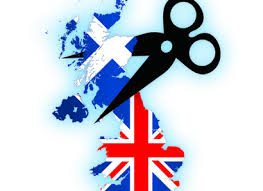
In case Scotland votes no, how should we regulate future independence referendums?
In a few months time Scotland will vote on independence. In my last post on the topic I discussed some of the consequences of a yes vote: the problems that would be raised around the currency, Scotland’s membership of the EU, and, more generally, the difficulties presented by the tight time-fame set by the Scottish Government for negotiation. That post should have given wavering ‘yes’ voters pause for thought; the path to independence is harder and riskier than the Scottish Government’s optimistic White Paper claims. In this post I will discuss one of the consequences of a no vote: its implications for subsequent independence referendums. This post should, perhaps, cause wavering ‘no’ voters to reflect. The independence referendum is, or should be, a once in a generation chance to leave the Union. It would be a mistake to assume that a second referendum will be held any time soon.
There are problems with constitutionalising a right to secession. In a classic article, written as the states of Eastern Europe were recasting their constitutional orders in the early 1990s, Cass Sunstein argued that constitutions should not normally incorporate a right to secede. Sunstein argued that such rights inhibited the creation of a united, effective, state. The constitutional possibility of secession might encourage regions to consider independence on a regular basis, and, on the other side of the equation, the remainder of the state will be aware of secession as an ever-present possibility. As Sunstein argues, this may inhibit long-term planning: why should the state engage in projects that principally benefit the region, knowing that the region might leave at anytime? And when the project benefits the whole state, but requires regional cooperation, how can the state be sure of this support? More darkly, Sunstein warns there is a risk of blackmail. The region can use a threat of secession to put unfair pressure on the remainder of the state. Finally, as Sunstein points out – and as we have reason to know all too well – questions of secession tend to stir emotions more deeply than other political questions. The intemperate character of debate around the issue can, in itself, harm the capacity of the state to act as a coherent unit.

Scotland: What will happen after the vote
At 650 pages Scotland’s Future is not a light read. It stands as the Scottish Government’s manifesto for a yes vote in the independence referendum. The volume ranges from profoundly important questions relating to currency and Scotland’s membership of the European Union, right down to weather-forecasting and the future of the National Lottery. Though it is likely many copies of Scotland’s Future will be printed, it is unlikely many will be read from cover to cover. Its authors probably do not regret its length: by its very heft, the volume seeks to rebut claims that the consequences of independence have not been carefully thought through. This post considers the immediate constitutional consequences of a yes vote in light of Scotland’s Future. Its central argument will be that the timescale proposed by the Scottish Government for independence following a referendum is unrealistic, and may work against the interests of an independent Scotland.

The constitutional inheritance of the royal baby: a speculation
It might be thought that there would be little need for a post on this blog about the arrival of the royal baby. The new Prince of Cambridge – Your Highness, to his friends – is unlikely to play a significant constitutional role for sometime to come. I found myself wondering, though, what the constitutional situation will be when, and if, he finally comes to the throne. So, here is the post I plan to write in 2075 – and the way academic pensions are going, I will probably still be working then.
To some, it may come as a surprise that Britain continues to be a monarchy. We escaped, or missed, the tide of republican constitutional reform that followed the death of Queen Elizabeth in the middle third of the century. Australia and Jamaica were the first to go, followed, like a line of falling dominos, by Canada, and then by New Zealand. Other territories followed suit, with most adopting an elected head of state or – more simply still – combing the role of head of state with that of prime minister. However, it is still the case that the sun never fully sets on our new King’s realms: some small territories decided, for economic and foreign policy reasons, to retain the royal connection. And the Privy Council, acting as their highest court, still provides a useful guarantee of legal certainty to the owners of the many corporations nominally residing on these islands. Like these micro-realms, we in the United Kingdom have retained our monarchy. This is only partly through choice: the moment has never seemed quite right for a public discussion of the wider issues raised by an hereditary head of state, there always seems to have been more important matters to worry about. It could well be said that it is apathy, rather than a commitment to royalism, than has allowed the institution to last this long.










